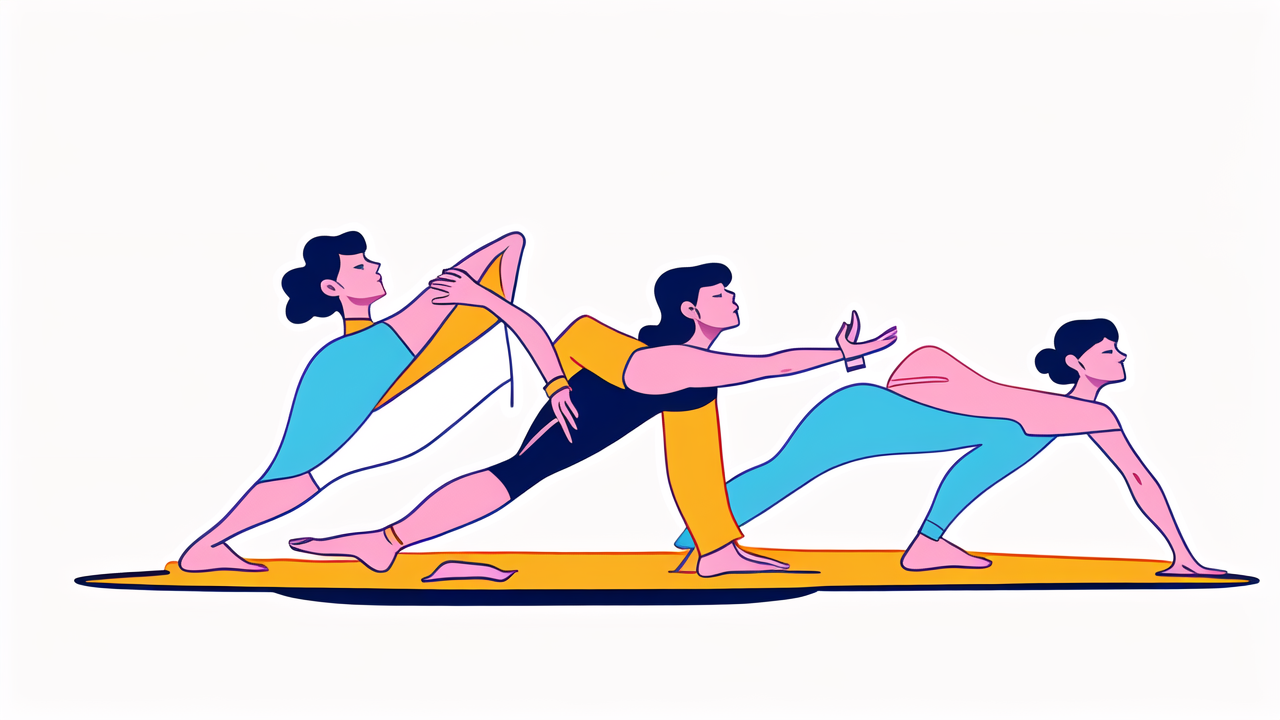
Understanding the Importance of Postpartum Yoga
Why Postpartum Yoga is Crucial for New Mothers
After having a baby, new mothers experience vast physical and emotional changes. Postpartum yoga is crucial for helping them cope with these shifts. It aids in the repair of the body and the calming of the mind. It helps to restore muscle strength, especially in the abdomen and pelvic floor. It also boosts circulation, which assists in healing. Yoga gives new moms a moment of peace, which is vital amidst their new duties. It is also a way to connect with other mothers and get support. Overall, postpartum yoga is key to a mom's health and well-being.

How Yoga Promotes Healing and Mental Well-being
Postpartum yoga serves as a gentle yet effective way to guide the body and mind toward recovery. For new mothers, it's not just about physical rebuilding; it's about creating space for emotional healing too. Incorporating yoga into postpartum care helps in addressing common issues such as stress and anxiety. It offers a holistic approach by combining physical postures, breathwork, and meditation. These elements work together to reduce cortisol levels, promoting relaxation and mental clarity. Furthermore, yoga provides a community of support, connecting mothers through shared experiences. By improving sleep quality and energy levels, yoga aids in better overall well-being post-birth.
Key Yoga Poses for Postpartum Care
Essential Postpartum Yoga Poses for Mental and Physical Recovery
Yoga can offer immense benefits for mental and physical recovery post-childbirth. Here's a list of essential postpartum yoga poses:
- Pelvic Floor Tilts: Strengthen the pelvic floor, which can be weakened after birth.
- Cat-Cow Stretches: Enhances spinal flexibility and relieves tension in the back.
- Legs-Up-The-Wall Pose: Helps reduce swelling in the legs and improves circulation.
- Child's Pose: Allows for deep relaxation and helps to stretch the back muscles.
- Bridge Pose: Strengthens the core and glutes, aiding in the recovery of the abdominal region.
Incorporating these poses into your routine aids in regaining strength and promotes overall healing.
Modified Yoga Poses to Suit Your Postpartum Body
Postpartum bodies need special care. Some yoga poses may be too intense right after giving birth. To help, here's a list of modified poses designed for new mothers:
- Pelvic Tilts: Gentle and effective for core re-strengthening.
- Wide Child's Pose: Gives space for the abdomen and supports relaxation.
- Bridge Pose: Modified with support to ease pressure on the lower back.
- Cat-Cow Stretch: Helps to soothe the back and maintain spine flexibility.
- Legs-Up-the-Wall Pose: Aids in reducing swelling of the legs and feet.
Each pose addresses the unique needs of a postpartum body. They are softer and focus on healing. Include them in your yoga practice for better recovery.
Integrating Yoga into Your Postpartum Routine
Tips on Creating a Balanced Yoga Practice Postpartum
- Start slow and be patient with your body's recovery process.
- Choose gentle yoga styles like Hatha or Yin as a starting point.
- Gradually increase practice duration and pose difficulty over time.
- Listen to your body and avoid yoga poses that cause discomfort or pain.
- Aim for consistency rather than intensity in your yoga sessions.
- Consider incorporating postpartum-specific yoga classes or online guides.
- Balance yoga practice with proper rest, nutrition, and hydration.
- Remember to include pelvic floor exercises in your routine.
- Engage with the postpartum yoga community for support and motivation.
- Always consult with your healthcare provider before starting any exercise postpartum.
Common Mistakes to Avoid in Postpartum Yoga
- Avoiding a routine: It's vital to stay consistent with yoga practice for benefits.
- Ignoring body signals: Listen to your body and don't push beyond limits.
- Skipping warm-up: Always start with gentle stretches to prepare the body for yoga.
- Forgetting breath work: Proper breathing is key to enhancing yoga's effects.
- Neglecting hydration: Stay hydrated before, during, and after yoga sessions.
- Rushing progression: Move to more advanced poses only when ready.
- Overlooking rest: Make sure to include restorative poses and relaxation time.
- Lacking variety: Mix different poses and styles to keep your practice enjoyable.
The Role of Yoga in Long-Term Postpartum Health
Yoga offers long-term benefits for postpartum moms. It can help restore muscle tone and support a healthy mind. Mothers can maintain their yoga routine to stay both physically strong and mentally calm. Over time, yoga can also aid in deeper healing. This includes both pelvic floor recovery and emotional well-being. Continued practice can prevent common postpartum issues like back pain. Yoga provides a foundation for lifelong health after childbirth.
